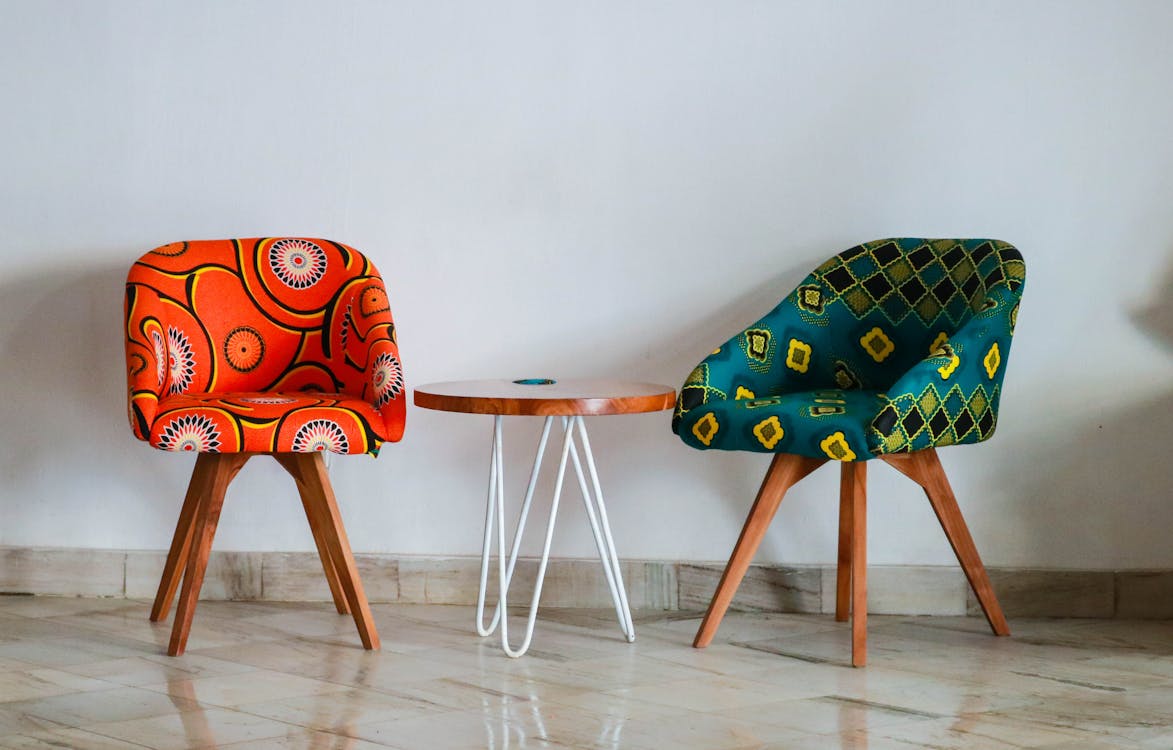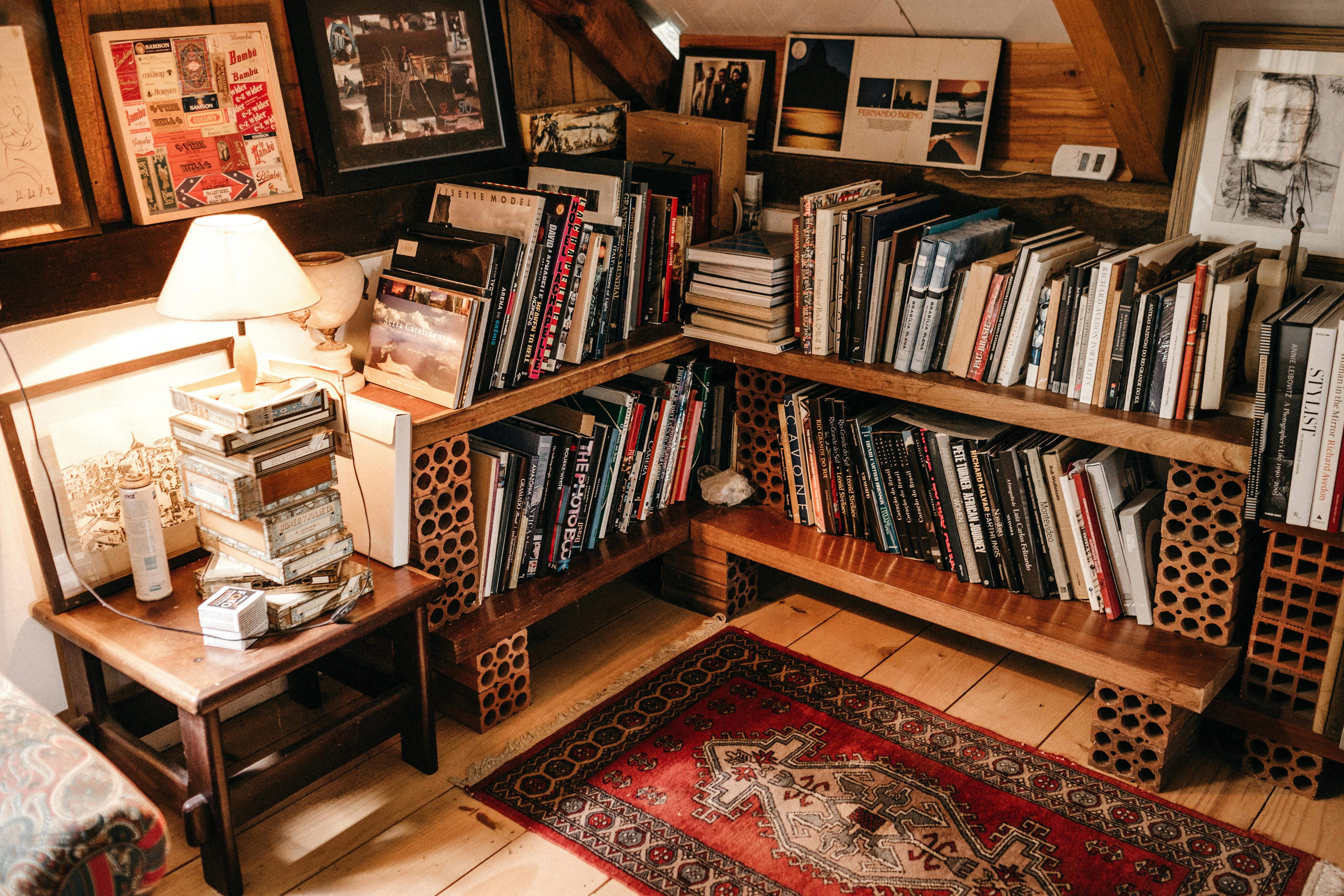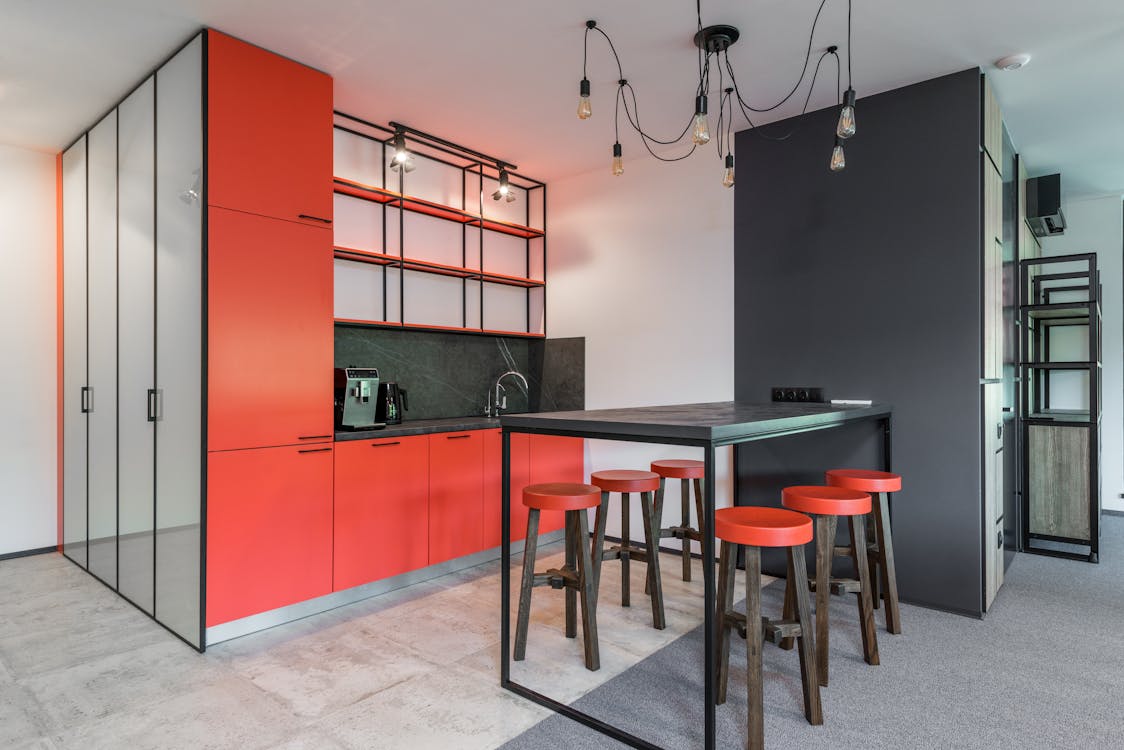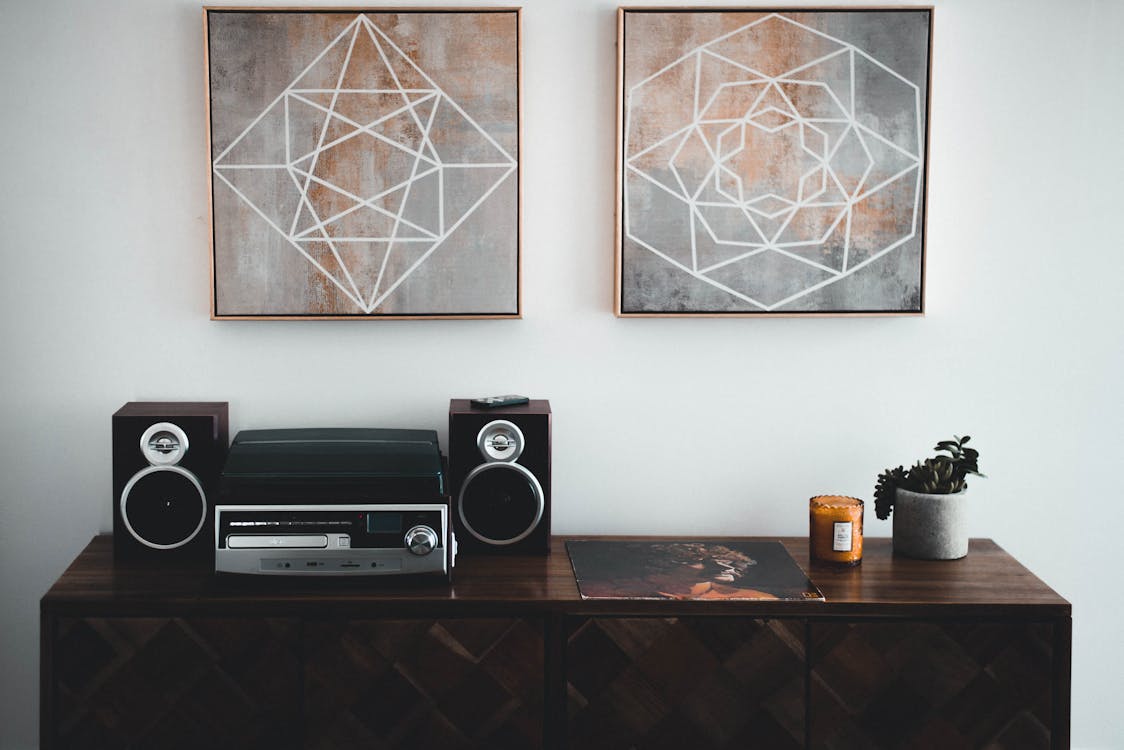Welcome to the world of minimalist design! In this article, we will explore the principles of creating a clutter-free home in 2024 that not only looks stylish but also brings a sense of tranquility and simplicity to your life. Whether you’re new to minimalism or looking to enhance your existing minimalist space, this guide will provide you with helpful insights and practical tips.
In today’s fast-paced and consumer-driven society, minimalism has gained popularity as a way to counter the overwhelming amount of stuff and information that surrounds us. By adopting minimalist principles, you can create a space that promotes clarity, reduces stress, and amplifies the aesthetics of your home.
Minimalist design doesn’t mean living with nothing or sacrificing your personal style; rather, it focuses on intentional choices and thoughtful decluttering to create a space that is visually appealing and functional. So, let’s dive into the world of minimalist design and discover how you can transform your home into a serene sanctuary.
Understanding Minimalist Design

When it comes to creating a clutter-free and calming environment in your home, minimalist design is the way to go. Minimalism is not just a style, but a mindset that encourages simplicity, functionality, and a focus on what truly matters. In this section, we will explore the definition of minimalism and the benefits of embracing a clutter-free home.
Defining Minimalism
Minimalism is all about living with intention and purpose, and it extends beyond just physical belongings. It is about stripping away the excess to create a space that is clean, organized, and visually appealing. Here are some key principles of minimalist design:
- Simplicity: Minimalist design emphasizes simplicity. It focuses on clean lines, a limited color palette, and a lack of unnecessary ornamentation.
- Functionality: Functionality is a crucial aspect of minimalist design. Every item in a minimalist space must serve a purpose and have a clear function.
- Openness: Minimalism promotes open and airy spaces. It encourages the removal of unnecessary furniture and clutter to create a sense of openness and freedom.
- Quality over Quantity: Rather than accumulating a multitude of items, minimalism encourages investing in high-quality pieces that will stand the test of time.
- Balance: Minimalist design seeks to achieve a balance between form and function. It blends aesthetics with practicality to create a harmonious space.
Benefits of Creating a Clutter-Free Home
Minimalism goes beyond just aesthetics. It offers a range of benefits that can improve your physical, mental, and emotional well-being. Here are some of the advantages of embracing a clutter-free home:
- Reduced Stress: Clutter can be overwhelming and stressful. A minimalist space promotes a sense of calm and tranquility, allowing you to relax and unwind.
- Improved Focus: When you have fewer distractions and visual clutter, it becomes easier to concentrate and focus on the task at hand.
- Enhanced Productivity: A clutter-free environment can boost your productivity by minimizing distractions and creating a clear space for work or creativity.
- More Time and Energy: With fewer possessions to manage and clean, you will have more time and energy to devote to activities and experiences that truly matter to you.
- Increased Happiness: Letting go of unnecessary possessions and simplifying your life can lead to a greater sense of fulfillment and contentment.
In the next section, we will explore practical steps to declutter your space and create a minimalist home that reflects your personal style and values.
Decluttering Your Space

In the world of minimalist design, decluttering your space is a crucial step towards creating a more organized and peaceful home. By getting rid of unnecessary items and organizing your belongings effectively, you can create a serene and clutter-free environment that promotes a sense of calm and tranquility.
Assessing Your Belongings
Before you can begin decluttering, it’s important to assess your belongings and determine what is truly essential and what can be let go. Ask yourself the following questions:
- Do I use this regularly?
- Does this item serve a specific purpose or function?
- Does it hold sentimental value?
- Can I imagine my space without this item?
By critically evaluating your belongings, you can begin to identify the items that are truly necessary and those that are just taking up space. Remember, minimalism is about intentionally curating your belongings and surrounding yourself only with things that add value to your life.
Effective Organization and Storage Solutions
Once you have sorted through and decluttered your belongings, it’s time to focus on organizing and storing them effectively. The goal is to create a well-organized system that allows you to easily find and access items when needed. Here are some tips for effective organization:
- Categorize similar items together (e.g., books, clothing, kitchen supplies).
- Utilize storage boxes, bins, and baskets to keep items neatly separated.
- Consider open shelving or transparent containers to make it easier to locate items.
- Label boxes and containers for easy identification.
- Make use of vertical space with wall-mounted shelves or hanging organizers.
- Utilize furniture with built-in storage, such as ottomans or bedframes with drawers.
By implementing these organization techniques, you can create a streamlined and efficient system that minimizes visual clutter and maximizes your space.
Letting Go of Sentimental Items
One of the biggest challenges in decluttering is letting go of sentimental items that hold memories and emotional value. While it can be difficult, it’s important to remember that minimalism is about prioritizing the present and the future over the past. Here are some strategies to help you let go of sentimental items:
- Take photos of sentimental items to preserve the memories without the physical clutter.
- Keep only a select few sentimental items that hold the most meaning for you.
- Consider passing down sentimental items to family members or friends who will appreciate them.
- Donate or sell sentimental items that no longer serve a purpose in your life.
Remember, minimalism is not about completely erasing the past, but about creating space for new experiences and memories to come. By letting go of unnecessary sentimental clutter, you can create a home that is a reflection of who you are in the present.
Decluttering your space is a fundamental step in embracing minimalist design. By assessing your belongings, organizing effectively, and letting go of sentimental items, you can create a clutter-free environment that promotes peace and clarity. So grab some boxes, put on some music, and get ready to transform your space into a minimalist haven!
Simplifying Furniture and Layout

When it comes to creating a clutter-free and minimalist home, simplifying your furniture and layout is key. By focusing on functional and essential pieces, utilizing vertical space, and arranging furniture for flow and openness, you can transform your space into a calming and organized oasis. Here are some tips to help you simplify your furniture and layout:
Choosing Functional and Essential Pieces
- Quality over quantity: Rather than filling your space with numerous pieces of furniture, focus on investing in high-quality, functional items that serve a purpose. This will not only reduce clutter but also ensure that each piece adds value to your home.
- Multi-purpose furniture: Look for furniture pieces that serve multiple functions, such as a storage ottoman or a sofa bed. This will help you maximize space and eliminate the need for unnecessary items.
- Minimalist aesthetics: Opt for clean lines, simple designs, and neutral colors when selecting furniture. This will create a cohesive and minimalist look throughout your home.
Utilizing Vertical Space
- Wall-mounted storage: Install shelves, hooks, and wall-mounted cabinets to free up valuable floor space while providing storage solutions for books, decorations, and other items.
- Floating furniture: Consider opting for floating shelves, wall-mounted desks, or floating vanities to create a sense of openness in your space. This allows for easy cleaning and gives the illusion of a larger area.
- Vertical storage units: Use tall storage units like bookcases or wardrobes to maximize vertical space. This not only provides ample storage but also draws the eye upward, making your space feel larger.
Arranging Furniture for Flow and Openness
- Create pathways: Arrange furniture in a way that allows for easy movement and flow in your space. Avoid overcrowding or blocking natural traffic areas to maintain a sense of openness and accessibility.
- Focal points: Designate a focal point in each room, such as a fireplace or a statement piece of furniture, and arrange the rest of the furniture around it. This creates a cohesive and visually appealing layout.
- Negative space: Embrace the concept of negative space by leaving empty areas in your room. This not only enhances the minimalist aesthetic but also allows for easier cleaning and a sense of tranquility.
By simplifying your furniture and layout, you can create a harmonious and clutter-free environment that promotes a sense of calm and relaxation. Remember, it’s not about sacrificing comfort or style but rather finding the perfect balance between functionality and simplicity.
Also Read: Minimalist Entryway Design: Welcoming Guests with Elegance in 2023
Color and Texture in Minimalist Design

When it comes to minimalist design, color and texture play a crucial role in creating a visually pleasing and harmonious space. The goal is to create a calming and clutter-free environment, and the right color palette and texture choices can greatly contribute to achieving that aesthetic. Here are some tips on how to incorporate color and texture into minimalist design:
Neutral Color Palettes
Minimalist design often relies on neutral color palettes to create a clean and serene atmosphere. By using shades of white, beige, gray, and black, you can create a timeless and elegant look. Here are some reasons why neutral colors work well in minimalist design:
- Versatility: Neutral colors are incredibly versatile and can easily be paired with other colors or used as a backdrop for statement pieces or artwork.
- Visual Space: Lighter shades of neutral colors can make a room appear larger and more spacious, which is a key aspect of minimalist design.
- Calming Effect: Neutral colors have a soothing and calming effect, making a space feel peaceful and inviting.
Integrating Texture and Patterns
While minimalist design tends to favor a clean and simple aesthetic, incorporating texture and patterns can add depth and visual interest to a space. Here’s how you can intelligently introduce texture and patterns into your minimalist design:
- Natural Materials: Using natural materials like wood, stone, or jute can bring warmth and texture to a minimalist space. Consider incorporating wooden furniture, stone countertops, or a jute rug to add tactile elements.
- Textured Fabrics: Choose fabrics with a subtle texture, such as linen or tweed, for upholstery, curtains, or throw pillows. These textures add visual interest without overpowering the overall minimalist aesthetic.
- Geometric Patterns: Minimalist design often incorporates geometric patterns, as they add a sense of order and symmetry. Consider using geometric patterns on rugs, wall art, or accent pillows to introduce visual interest.
Remember, the key to using color and texture in minimalist design is to keep it simple and intentional. Aim for a balanced and cohesive look by choosing a few key colors and textures that complement each other well.
Creating Minimalist Storage Solutions

When it comes to creating a clutter-free and minimalist home, having efficient storage solutions is key. Minimalist storage not only helps you keep your space organized, but it also allows you to maintain a clean and serene environment. Here are some tips to help you create effective storage solutions in your minimalist home:
Hidden Storage Options
- Utilize multi-purpose furniture: Invest in furniture pieces that serve more than one function, such as ottomans with hidden storage compartments or coffee tables with built-in shelves. These types of furniture can help maximize storage without taking up additional space.
- Utilize under-bed storage: The space under your bed is often unused, so consider utilizing storage containers designed specifically for this area. They are perfect for storing items like seasonal clothing, extra bedding, or even shoes.
- Use vertical space: Install floating shelves or wall-mounted cabinets to help maximize vertical storage. This allows you to keep frequently used items within easy reach while keeping your surfaces clutter-free.
- Convert dead space: Look for any unused or underutilized spaces in your home, such as the area under the stairs or the empty space above high cabinets. Install custom-made storage solutions like pull-out drawers or shelves to make the most of these areas.
Maximizing Space in Small Areas
- Utilize over-the-door storage: Over-the-door organizers are great for utilizing the space behind doors, such as in your bathroom or pantry. You can store items like toiletries, cleaning supplies, or even spices and condiments in these handy organizers.
- Use clear storage containers: Clear storage containers help you see what you have at a glance, making it easier to find and access your belongings. Opt for stackable containers to maximize vertical space and keep your items neatly organized.
- Utilize wall space: Install hooks or pegboards on your walls to hang items like hats, bags, or kitchen utensils. This not only adds functionality to your space but also keeps those items within reach and off your countertops.
- Consider open shelving: Open shelves can provide stylish storage solutions while keeping your space visually open and airy. Use them to display items that you love and need easy access to, such as books, plants, or kitchen essentials.
Organizing Digital Clutter
In today’s digital age, it’s essential to tackle digital clutter as well. Here are some tips for organizing your digital life:
- Delete unnecessary files and apps: Regularly go through your devices and delete any files, apps, or programs that you no longer use or need. This will free up storage space and help your devices run more efficiently.
- Organize digital files and folders: Create a system for organizing your digital files and folders so that you can easily find what you need. Use descriptive names and create subfolders to keep everything organized and easily accessible.
- Utilize cloud storage: Consider using cloud storage solutions like Google Drive or Dropbox to store important documents, photos, or files. This not only helps free up space on your devices but also provides you with the convenience of accessing your files from anywhere.
By implementing these storage solutions in your minimalist home, you can create a clutter-free environment where everything has its place. Remember to regularly declutter and reassess your storage needs to ensure that your minimalist lifestyle stays on track. Happy organizing!
Implementing Minimalism in Different Rooms

When it comes to implementing minimalism in different rooms of your home, the key is to create spaces that are functional, clutter-free, and visually calming. Whether you’re tackling your living room, bedroom, kitchen and dining area, home office, or bathroom, here are some tips for incorporating minimalist design principles into each room:
Minimalist Living Room
- Keep furniture to a minimum: Choose essential pieces that serve a purpose and avoid overcrowding the room.
- Opt for a neutral color palette: Use neutral colors like white, gray, or beige to create a sense of calm and simplicity.
- Limit decor: Stick to a few carefully selected pieces that are meaningful to you, rather than filling the room with unnecessary items.
Minimalist Bedroom
- Clear the surfaces: Keep your bedside tables and dressers clear of clutter, creating a serene space for relaxation.
- Choose a simple bed frame: Opt for a minimalist bed frame with clean lines to keep the focus on restfulness.
- Maintain a soothing color scheme: Create a calming atmosphere with soft, muted colors and minimal patterns.
Minimalist Kitchen and Dining Area
- Declutter countertops: Keep your countertops free from unnecessary appliances and only display essential items.
- Organize your cabinets: Utilize storage solutions to keep your kitchenware organized and easily accessible.
- Embrace simplicity in table settings: Stick to clean lines and minimal decorations when setting your table.
Minimalist Home Office
- Create a clutter-free workspace: Keep your desk tidy and organized, with only essential items within reach.
- Optimize storage: Utilize vertical space and storage solutions to keep your office supplies neatly stowed away.
- Limit distractions: Minimize visual clutter, such as excessive wall art or decorations, to maintain focus.
Minimalist Bathroom
- Go for a spa-like atmosphere: Keep your bathroom clean and uncluttered, with only essential items on display.
- Simplify your products: Use multipurpose products and keep only what you really need, avoiding excessive toiletries.
- Create a serene color palette: Opt for a neutral color scheme with pops of color through towels or accessories.
By implementing these minimalist design principles in each room of your home, you’ll create spaces that are not only visually appealing but also promote a sense of calm and tranquility. Remember, minimalism is about focusing on what truly adds value to your life and letting go of the excess. Happy decluttering!
Incorporating Minimalist Design Principles into Daily Life

Minimalist design is not just about creating a clean and clutter-free home; it is a way of life that can bring peace, simplicity, and joy into your daily routine. By embracing minimalist design principles in your day-to-day life, you can reduce stress, increase productivity, and focus on what truly matters. Here are some practical ways to incorporate minimalist design principles into your daily life:
Mindful Consumerism
- Be intentional with your purchases and avoid impulse buying. Before making a purchase, ask yourself if you truly need the item and if it aligns with your values and goals.
- Practice minimalism in your wardrobe by curating a capsule wardrobe with versatile pieces that can be mixed and matched.
- Adopt a “one in, one out” rule, maintaining a balance by getting rid of an item each time you bring a new one into your home.
- Choose quality over quantity. Invest in long-lasting, durable items rather than buying cheap and disposable products.
Maintenance and Regular Decluttering
- Dedicate regular time to declutter and organize your space. Set aside a few minutes each day or a specific day of the week to tackle clutter.
- Create designated spaces for items, ensuring that everything has a home. Return items to their designated spaces after each use.
- Practice the “one-minute rule”: If a task takes less than one minute to complete, do it immediately. This prevents small tasks from piling up and becoming overwhelming.
Sustainability in Minimalist Living
- Embrace sustainability by adopting eco-friendly practices. Choose reusable items over disposable ones whenever possible. For example, use cloth bags instead of plastic bags.
- Reduce waste by recycling and repurposing items. Get creative and find new uses for items that might otherwise end up in the trash.
- Opt for natural and sustainable materials in your home decor and furnishings. Choose items made from organic, renewable materials such as bamboo or cork.
Incorporating minimalist design principles into your daily life goes beyond just decluttering your physical space. It is about adopting a mindset that appreciates simplicity, values quality over quantity, and practices mindful consumption. By doing so, you can create a more meaningful and intentional life that focuses on the things that truly matter. Remember, minimalism is not about depriving yourself; it is about making room for the things that bring you joy and adding value to your life. So start small and gradually incorporate these principles into your daily routine. You’ll be surprised at how much lighter and more fulfilling your life can become.
Also Read: Minimalist Home Decor Ideas: Simple and Elegant Designs in 2023
Conclusion
Incorporating minimalist design principles into your home can have a profound impact on your well-being and daily life. By decluttering your space, simplifying furniture and layout, and embracing neutral colors and textures, you can create a calming and clutter-free living environment. Keeping minimalism in mind when it comes to storage solutions and implementing it in different rooms allows you to maintain a clean and organized home.
But minimalist design isn’t just about your physical space. It’s a lifestyle that extends beyond your home. Mindful consumerism, regular maintenance, and sustainability are all important aspects of embracing minimalism in your daily life. By being intentional with your purchases, consistently decluttering, and making environmentally conscious choices, you can fully immerse yourself in the minimalist mindset.
Remember, minimalism is not about depriving yourself of things you love. It’s about surrounding yourself with things that bring you joy and add value to your life. So embrace minimalism and create a space that reflects your personal style and promotes peace and tranquility.
To read more relatable information, visit Unlock Your Home’s Potential : Utilizing Unused Spaces in 2024.
For more inspiration and guidance on minimalist design, be sure to check out Minimalist Home Guru. Their experts can help you declutter your home, select the right furniture, and create a soothing and clutter-free living space. Happy minimalist living!
Frequently Asked Questions
- What is minimalist design?
Minimalist design is a design style that focuses on simplicity, clean lines, and a clutter-free aesthetic. It promotes the idea of living with less and only having essential items that bring joy and functionality. - What are the key principles of minimalist design?
The key principles of minimalist design include simplicity, functionality, minimal color palette, clean lines, clutter-free spaces, and a focus on quality over quantity. - How do I create a clutter-free home?
To create a clutter-free home, start by decluttering and getting rid of items you no longer need or use. Organize your belongings, create designated spaces for everything, and adopt minimalist storage solutions. Simplify your decor and aim for a clean and uncluttered aesthetic. - What are some tips for incorporating minimalism into home decor?
Some tips for incorporating minimalism into home decor include: – Keep surfaces clear and only display a few carefully chosen decorative items. – Opt for furniture with clean lines and functional design. – Use a neutral color palette with pops of color or texture for visual interest. – Embrace negative space and allow room for breathing in your design. - Can minimalist design be applied to all types of homes?
Yes, minimalist design can be applied to all types of homes, regardless of size or architectural style. The principles of minimalism can be adapted to any space to create a clutter-free and visually appealing environment.

